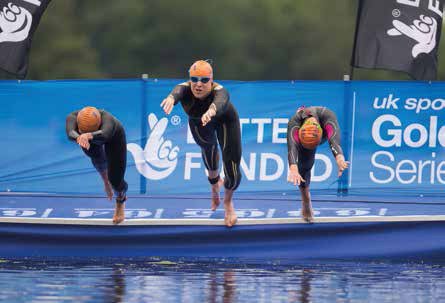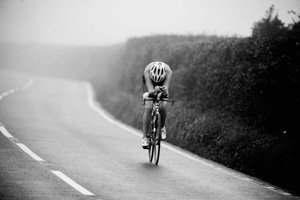articles/Triathlons/Triathlons-page3
Photographing Triathlons - part 3 of 1 2 3 4 5 6 7
Published 01/08/2014

The ethos of Dirty Green Trainers is to produce images not only for competitors but for organisers and advertisers as well. This means that the team is always looking to put a creative spin on the images that they take. "Looking for beautiful backdrops and then accenting the athletes with a little off-camera flash can make a great shot. The organisers love those kind of images because they really help to sell an event and make the sport look special." It had never occurred to me to use a flashgun at an event like this, so I couldn't resist asking Ian what other essentials are in his triathlon kit bag. "I use a Nikon D4 and a D3 as my cameras and then usually 70-200mm f2.8 and a 24-70mm f2.8 lenses. I also use a 300mm f2.8 with 1.4x converter for long shots." That's a lot of kit to lug around with him when he can't base himself out of a car at the prestige events! "If I know I have a bit of time I might also set up the Elinchrom Quadra and use that to get some dramatic light with the high-speed sync."

Shooting the swim is often the most challenging aspect of photographing a triathlon. "Coastal triathlons often use the sea, so you can use the sea defences to get a great vantage point but you can never get right up close to get tight shots of individual athletes. In the past I've gone out in a boat so that you can get a different perspective on the dive start which the agencies love because it's something different to the usual starting photograph." Shooting the athletes coming out of the water can be a challenge too because the backgrounds are often not very aesthetically pleasing and you cannot simply choose to use a different location.
Please Note:
There is more than one page for this Article.
You are currently on page 3
- Photographing Triathlons page 1
- Photographing Triathlons page 2
- Photographing Triathlons page 3
- Photographing Triathlons page 4
- Photographing Triathlons page 5
- Photographing Triathlons page 6
- Photographing Triathlons page 7
1st Published 01/08/2014
last update 18/07/2022 16:35:44
More Triathlons Articles
There are 32 days to get ready for The Society of Photographers Convention and Trade Show at The Novotel London West, Hammersmith ...
which starts on Wednesday 14th January 2026








